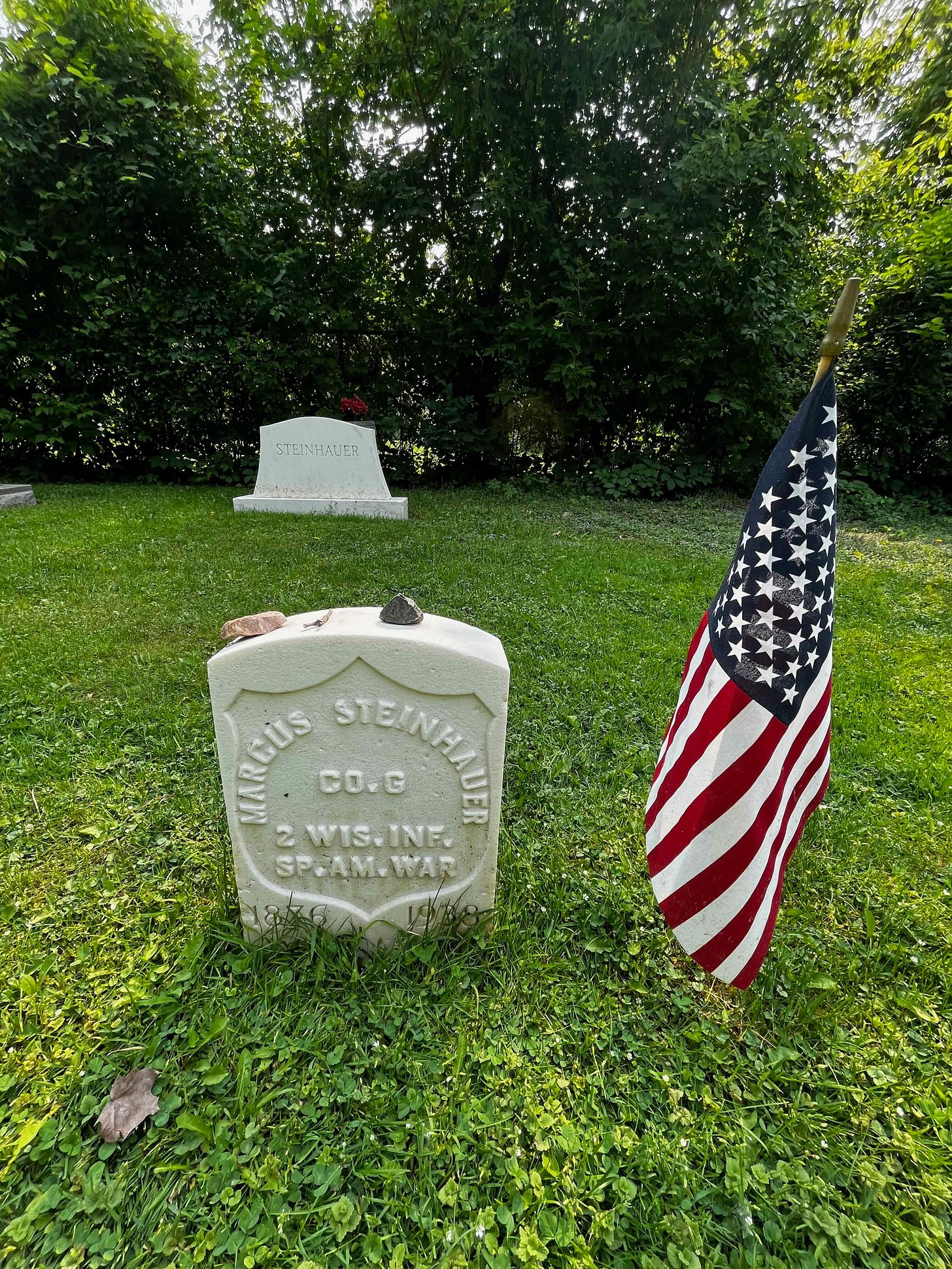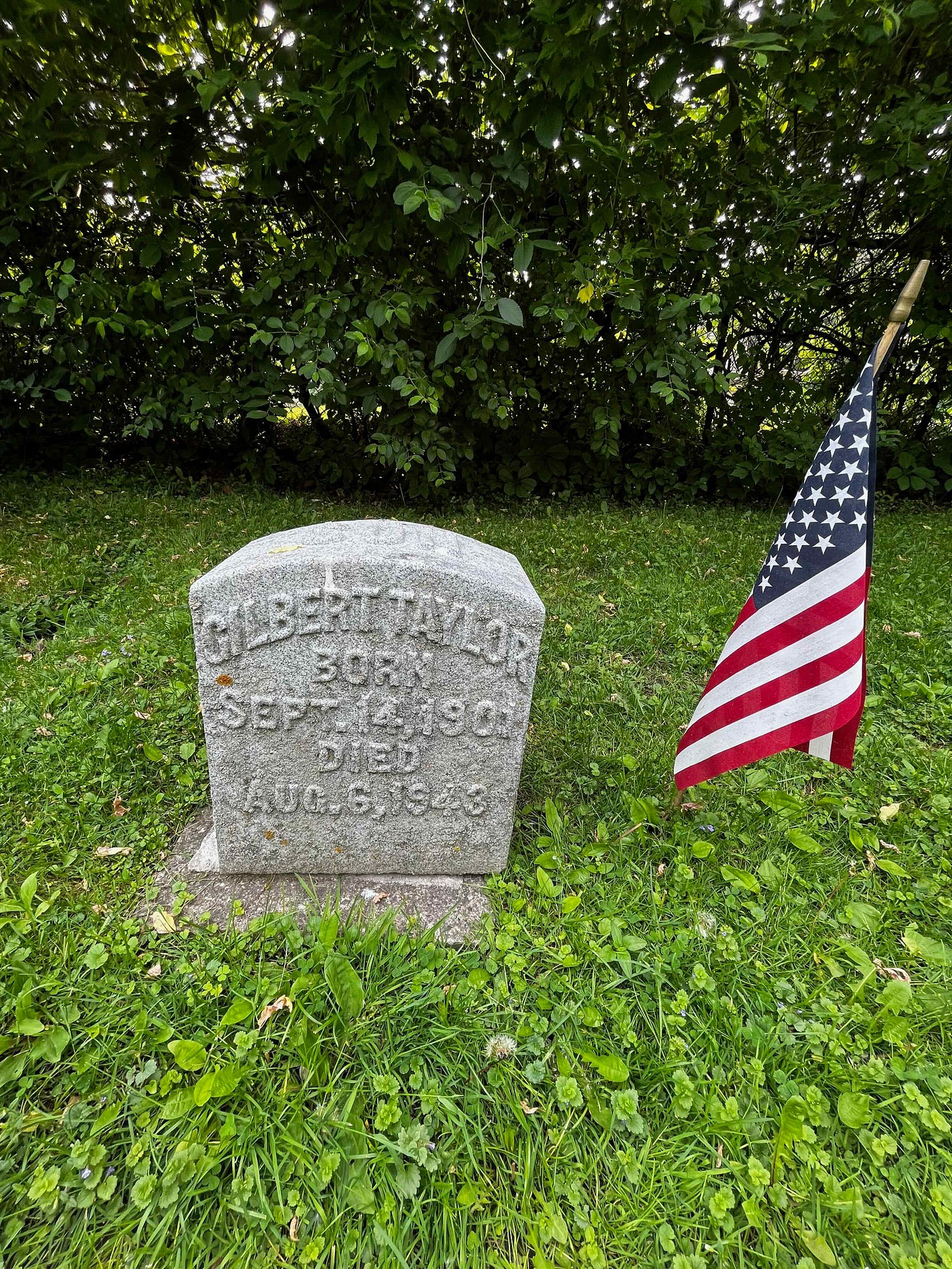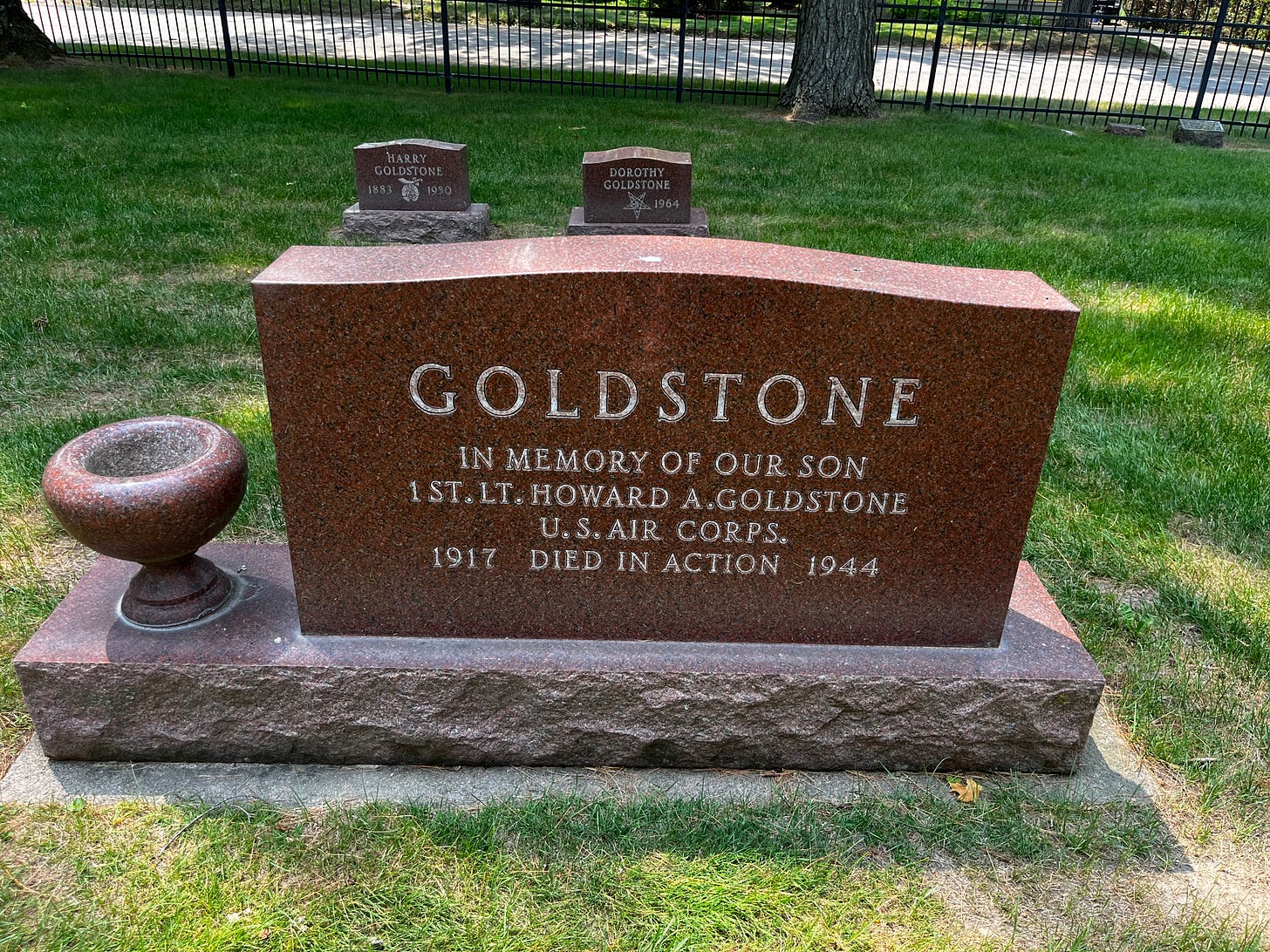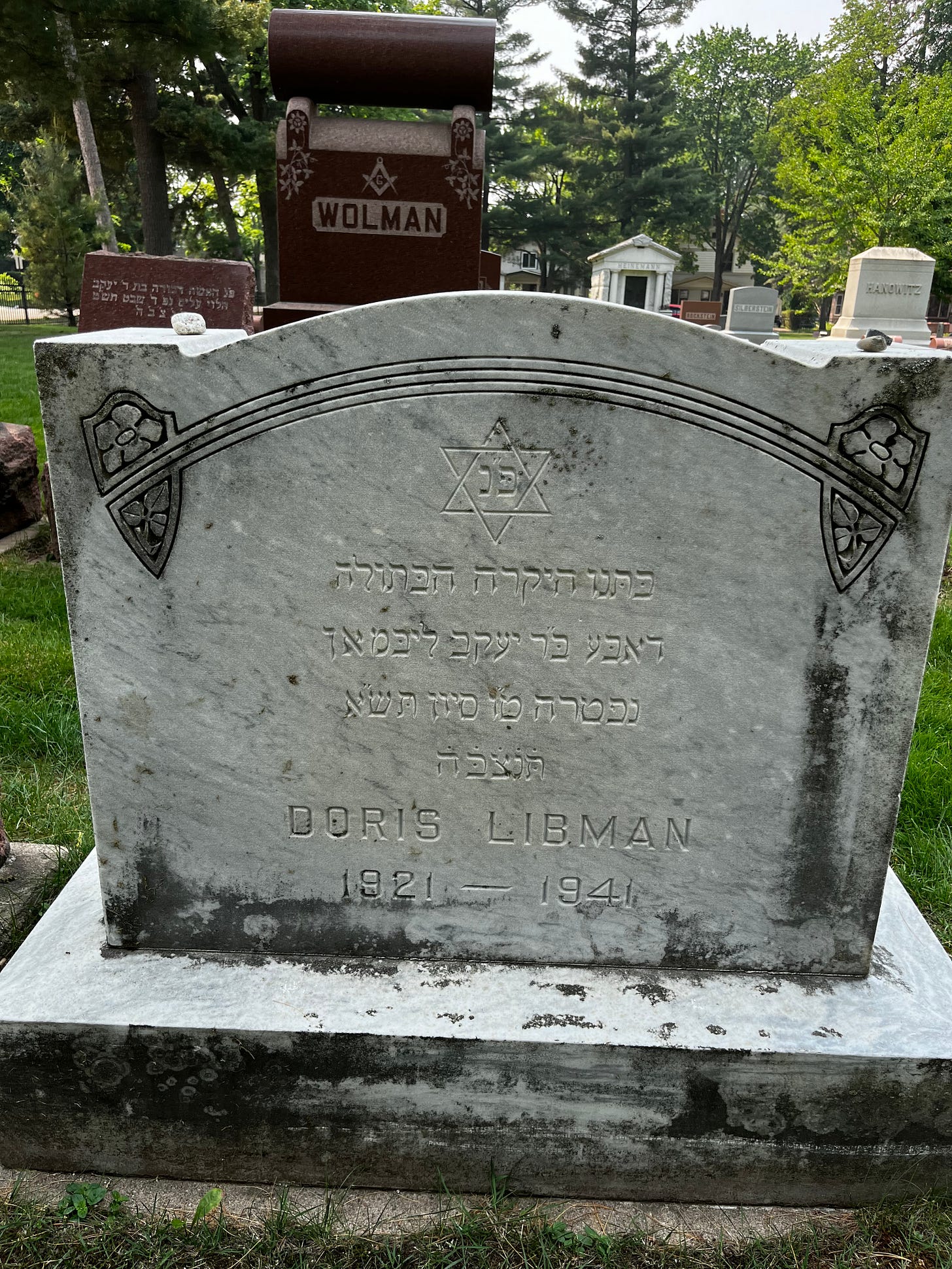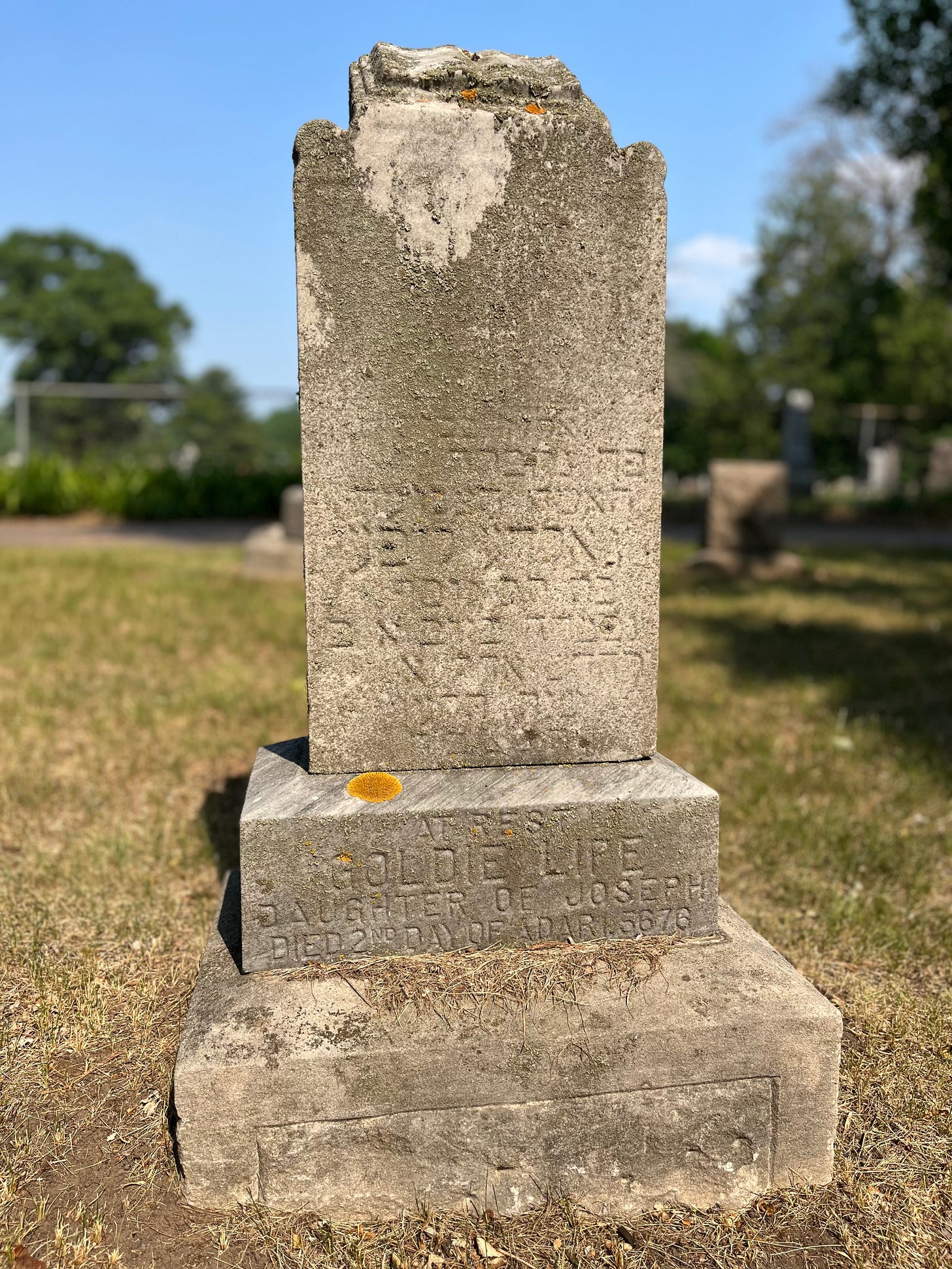I was immediately struck by the intimacy, the uncommonly modest beauty and the patriotism. Weird sentence, I know, but it’s true.
Sunday morning I headed out on the road from Milwaukee for stops at Jewish cemeteries in Appleton, Wausau and Eau Claire. These small, still vibrant cities in Central Wisconsin were once home to burgeoning Jewish communities whose founders were very much at the forefront in the 19th century of building industry and civic life in those places. Now, a century and a half since Jews migrated from Germany to those areas, the Jewish presence is diminishing. Once robust synagogue communities aren’t really growing at a significant rate, raising a whole host of questions about current priorities, sustainability, legacy planning and historical preservation.
To be sure, these are not dying communities; but they are also not particularly regenerative. Their Jews are predominantly older, not younger; their children and grandchildren have moved to other cities and towns throughout the region and country where there is more opportunity than what smaller cities can offer. Hell, I’m guilty of this myself. I had stars in my eyes when I left Wisconsin in 1989 to start rabbinical school and served Jewish communities in New York City for more than 30 years. Now look at me: rounding the bag at 60 years old and coming back to the Midwest to help support and preserve the unique and honorable history of Midwestern Jewry.
So back to the intimacy, the modesty and the patriotism. When I pulled in to Zion Temple Cemetery in Appleton, shaded by tall pine and sturdy oak, I looked across an historical landscape of gravestones that shone in their dappled sunlight and immediately noticed for such a small graveyard an unusually large number of American flags beside the stones of veterans: Spanish American War, World War I, World War II, Korea and Vietnam. (In neighboring Moses Montefiore Cemetery, I noticed a Jewish veteran of the first Iraq War as well.). And like a scene in Thornton Wilder’s Our Town, I imagined the veterans talking to each other throughout the day, sharing stories of adventure and service, mourning friends who they lost in battle, and wondering what has become of the country they once proudly defended.
My father, who graduated Shorewood High School in 1941 and went off to Madison before being drafted, served from 1943-1946 and though he lived another 37 years, I don’t think he had any better time than when he served his country. His own photographs from the war bear the mark of his own enthusiasm for these precious early years of his life: he recorded the names and places across the country his fellow soldiers came from, a kind of personal archive and testimony to the shared, diverse effort to fight fascism and defeat Hitler.
I, of the post-Vietnam War generation, was not required to serve my country. Rather, I was afforded all the privilege of economic class and allowed to go live my best life while others from more modest economic backgrounds found a volunteer professional army to be a potential path to career stability and success. The result, articulated quite well by Pete Buttigieg, was a bifurcated society where not everyone was asked to make an equal contribution for the privilege of citizenship. And, it meant that a disproportionate number of less advantaged white, Black, Latino and Native Americans would die in America’s subsequent wars. That is blatantly unjust and wrong.
Sheila Terman Cohen writes beautifully about these Jewish communities in her work for the Wisconsin State Historical Society, Jews of Wisconsin. Terman Cohen points out that “these same Jewish communities began to decline in the 1950, '60s and '70s as larger cities and higher education beckoned the next generation. As the postwar period gave rise to the GI Bill, which granted World War II veterans money to further their education, college enrollment among Jews soared. By 1964, 80% of Wisconsin's young Jewish people attended a four-year college, usually in locations far away from their rural communities.”
Maybe that intimacy I noticed was also due to the fact that very few new burials take place in many of these cemeteries. Zion Temple Cemetery, named by the synagogue served by Rabbi Mayer Samuel Weisz, the father of Appleton’s most famous Jew, Harry Houdini (Eric Weisz), is smaller by half and nearly full; Moses Montefiore Cemetery has a large expanse of grass that will likely never be used for burial.
The Jewish cemetery in Wausau told a similar story. There I sat in the shade of a large oak tree chatting with Wausau’s Jewish leader, Rabbi Ben Altshuler, who is only three years removed from his ordination as a rabbi but along with his wife, Rabbi Natalie Shribman, are deeply devoted to serving Midwestern Jewry. They do as Jews have done for generations wherever we have lived: teach, officiate life cycle events, convert spiritual seekers to Judaism, and bury their dead. They also, through dialogue and activism, attempt to counter the reality of anti-Semitism that rears its head in these places.
In fact, on the drive up from Milwaukee, one can see the political winds shift in real time. Billboards beside the highway proliferate with messages that are predominantly anti-abortion, pro-gun, pro-Trump and anti-Biden. (I was also struck by an unusual number of billboards calling attention to Adult Stores. Make of it what you will but it seems to fit somehow.)
Navigating difference in small towns where sameness is the coin of the realm has never been easy for Jews but we have been doing it for centuries and I have faith that decency and kindness will prevail.
My last stop of the day was at the Eau Claire Jewish cemetery, which is in a fenced off area within the Catholic and Protestant cemeteries in town. Here one could feel time stand still even more in the heat of the day. Crows cawed above; the grass was already dry; and stones were calling out for care, preservation and love.
My journey continues today with meetings in Minneapolis and St Paul followed by time spent with new friends at both the Andersen Library at the University of Minnesota, which houses the Upper Midwest Jewish Archives, and the Jewish Historical Society of the Upper Midwest.
Tuesday morning I head to Sioux City, Iowa and will be reporting back on these visits in the next Substack.
Til then, I leave you with one of the greatest beers I have ever had: Dangerous Man Brewing Company’s Peanut Butter Porter. It made for a very smooth landing in Minneapolis.




